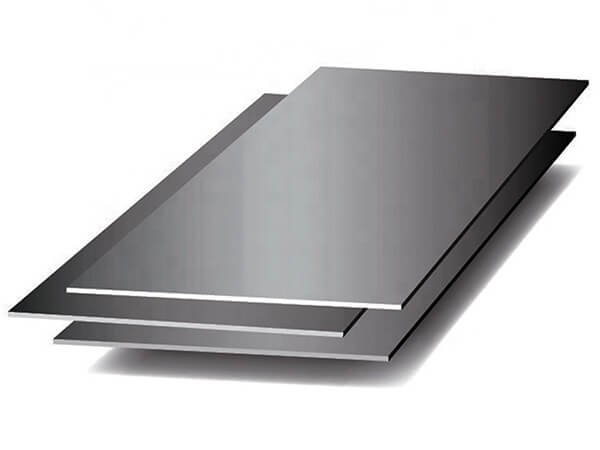Stainless steel plates are widely used across various industries and in everyday life due to their unique combination of properties, including durability, corrosion resistance, aesthetic appeal, and hygienic qualities.
Key characteristics
- Composition: Stainless steel is an alloy primarily composed of iron, with a minimum of 10.5% chromium. Other alloying elements like nickel, molybdenum, titanium, and more are added to achieve specific properties and grades.
- Corrosion resistance: The chromium in stainless steel forms a passive oxide layer that prevents rust and corrosion, making it ideal for use in harsh environments, including marine, chemical, and industrial settings.
- Durability and strength: Stainless steel is renowned for its strength, durability, and ability to withstand impact and heavy loads. Certain grades can be heat-treated to further enhance their strength and hardness.
- Hygienic properties: Stainless steel is non-porous and resistant to bacteria, making it easy to clean and sanitize. This makes it a popular choice for medical equipment, food processing, and kitchenware.
- Aesthetic appeal: Stainless steel plates offer a sleek, modern appearance, available in various finishes like brushed, polished, and mill finish, suitable for architectural decoration and modern designs.
- Heat resistance: Certain stainless steel grades exhibit good heat resistance, making them suitable for high-temperature environments such as boilers and heat exchangers.
- Recyclability: Stainless steel is 100% recyclable, contributing to sustainability and reducing the demand for virgin resources.
Types of Stainless Steel Plates
Stainless steel plates are divided into five major categories depending on their crystalline structure and composition:
Austenitic: The most prevalent variety, recognized for its superior corrosion resistance, ductility, and weldability. Examples include grades 304 and 316.
Ferritic: Magnetic, resists stress corrosion cracking, and is widely utilized in indoor applications, automobile parts, and kitchen sinks. Grade 430 is an example.
Martensitic: Heat treatment can be used to harden materials, giving them exceptional strength and resistance to wear. Used in cutlery, turbine blades, and medical devices.
Duplex: A combination of austenitic and ferritic structures provides a good balance of high strength, corrosion resistance, and stress corrosion cracking resistance. Grade 2205 is a typical example.
Precipitation-hardening: Can be heat-treated to obtain very high tensile strength. Used in demanding applications like as aerospace and military.
Applications
Stainless steel plates are used in a wide range of applications across multiple industries:
Construction and Infrastructure: Used for structural frames, bridges, roofing, cladding, and architectural embellishment.
Automotive and Aerospace: Improves fuel efficiency, safety, and durability in automobile bodies, rail cars, and aviation components.
Food Processing and Catering: Essential for clean surfaces, storage tanks, and processing equipment.
Chemical and Pharmaceutical: Suitable for corrosion-resistant containers, pipelines, and equipment.
Medical and Healthcare: Applied to surgical instruments, medical devices, hospital equipment, and surgical implants.
Oil and Gas: Can withstand high temperatures and corrosive environments; utilized in tanks, pressure vessels, and pipes.
Household Products: Located in kitchen sinks, countertops, cookware, cutlery, and appliances.
Choosing the right stainless steel plate
When selecting stainless steel plates, consider the following factors:
- Application Requirements: Determine the load-bearing capacity, environmental conditions, and level of wear and tear the plate will be subjected to.
- Grade of Stainless Steel: Choose a grade that offers the required level of corrosion resistance, strength, and other specific properties for your project. For instance, 316-grade stainless steel is ideal for marine environments, while 304 is suitable for general use.
- Thickness and Size: Select the appropriate thickness and size to ensure adequate structural support and meet the project’s specifications.
- Surface Finish: Consider the aesthetic requirements and select a finish that complements the overall design. Finishes like brushed, polished, and mill finish are available.
- Fabrication and Installation: Ensure the chosen plate can be easily welded, formed, or machined if required.
- Cost: While a factor, avoid solely focusing on price and prioritize quality and suitability for long-term success.
- Reputation of the Manufacturer: Look for certified suppliers with a track record of providing high-quality products and excellent customer service.
By carefully considering these factors and understanding the different types and applications of stainless steel plates, you can make an informed decision to Newzel Industries and select the ideal material for your needs.


